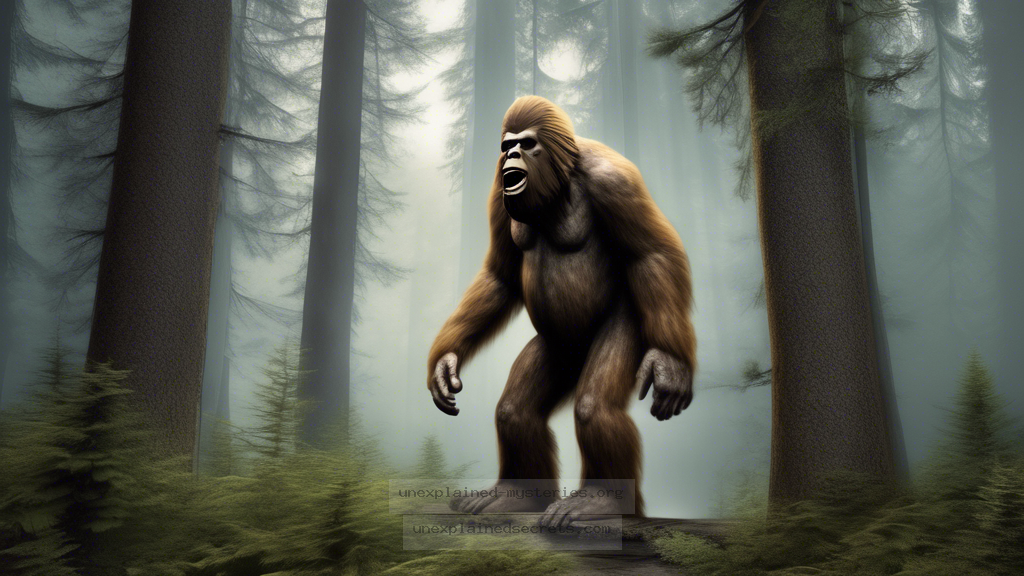What evidence supports the theory that Bigfoot exists in North America?
What evidence supports the theory that Bigfoot exists in North America?
The question of Bigfoot’s existence has intrigued both believers and skeptics alike for decades. The elusive creature, often described as a large, hairy ape-like being roaming the forests of North America, has become a symbol of cryptozoology. Despite the lack of definitive proof, a collection of intriguing evidence continues to fuel the debate. Understanding the various types of evidence supporting the theory of Bigfoot’s existence is crucial for anyone interested in the mystery of this legendary being. This exploration will delve into historical accounts, eyewitness testimonies, physical evidence, and scientific studies, shedding light on why this question matters and what it means for the field of cryptozoology.
Historical Context of Bigfoot Sightings
Bigfoot, also known as Sasquatch, has been a part of North American folklore for centuries. Indigenous tribes like the Salish and the Lakota have long spoken of a large, hairy man-like creature that inhabits the wilderness. These stories date back to before European settlers arrived, suggesting that the legend of Bigfoot is deeply rooted in the culture of the continent.
The modern era of Bigfoot sightings began in the mid-20th century, with the infamous 1958 Bluff Creek incident in California, where large footprints were discovered near a logging site. This event sparked massive interest and led to extensive investigations. Since then, countless sightings have been reported, creating a rich tapestry of anecdotal evidence that both supports and challenges the existence of Bigfoot.
Core Concepts of Bigfoot Evidence
Evidence supporting Bigfoot’s existence can be categorized into multiple types, including physical evidence, eyewitness accounts, audio recordings, and photographs. Each of these categories has its strengths and weaknesses, contributing to the ongoing debate within the community of Bigfoot enthusiasts and skeptics alike.
- Physical Evidence: This includes footprints, hair samples, and scat.
- Eyewitness Accounts: Testimonies from those who claim to have seen or encountered Bigfoot.
- Audio Recordings: Sounds attributed to Bigfoot, such as howls or wood knocking.
- Photographs and Videos: Visual evidence captured by witnesses or researchers.
Understanding the nuances of each type of evidence is essential for evaluating the credibility and implications associated with Bigfoot sightings.
Analyzing Physical Evidence: Footprints and Hair Samples
One of the most commonly cited pieces of evidence supporting Bigfoot’s existence comes in the form of footprints. Many researchers claim to have documented prints that are significantly larger than human footprints, often measuring up to 24 inches long. These prints exhibit features that are said to be indicative of a large, bipedal creature. However, skeptics argue that these could easily be hoaxes or misidentified animal tracks.
Hair samples purportedly belonging to Bigfoot have also been collected. In certain instances, DNA analysis has shown that some hair samples do not match any known species, leading to speculation about their origins. A notable example is the 2012 study conducted by Dr. Melba Ketchum, which claimed to have sequenced DNA from Bigfoot hair. However, the study faced significant scrutiny and criticism from the scientific community for its methodology and results.
Eyewitness Accounts: The Human Element in the Bigfoot Mystery
Eyewitness testimonies play a crucial role in the Bigfoot narrative. Reports often describe the creature as being over 7 feet tall, covered in dark hair, and exhibiting human-like features. Notable cases, such as the 1973 sighting by a group camping in the Okanogan National Forest in Washington State, have been documented extensively. Witnesses provided detailed descriptions, including the creature’s behavior and physical characteristics.
While many accounts come from credible individuals, the reliability of eyewitness testimonies is often called into question due to the psychological factors involved in witnessing something extraordinary. Memory can be fallible, and the influence of fear or excitement can distort perceptions. Nevertheless, the sheer volume of these accounts raises intriguing questions about what people may have encountered.
Audio Recordings: Sounds of the Unknown
Audio evidence has also surfaced over the years, with enthusiasts recording sounds that they believe to be associated with Bigfoot. These recordings often include howls, growls, and wood knocking—sounds that some claim are characteristic of the creature. A famous example is the Sierra Sounds, recorded in the 1970s by Ron Morehead and his team in the Sierra Nevada Mountains. The recordings contain a series of eerie vocalizations that have yet to be explained by experts.
While some of these sounds can be attributed to known wildlife, such as coyotes or bears, others remain unexplained. The challenge lies in distinguishing between natural animal calls and potential Bigfoot vocalizations, as well as the difficulty in obtaining conclusive evidence to support these claims.
Photographic Evidence: Capturing the Elusive Bigfoot
Photographs and videos claiming to show Bigfoot have been a staple of its lore. One of the most famous pieces of evidence is the Patterson-Gimlin film, taken in 1967 in Bluff Creek, California. The footage shows a large, upright creature walking away from the camera and has been the subject of intense scrutiny for decades.
While many have praised the film as authentic, skeptics argue that it could easily be a hoax, pointing out inconsistencies in the movements of the creature. Despite ongoing debates, the Patterson-Gimlin film remains a pivotal piece of evidence for believers in Bigfoot’s existence.
Alternative Perspectives: Debunking the Myth
While many people are passionate about the existence of Bigfoot, there are also strong counterarguments. Skeptics often point out the lack of physical evidence, such as bones or a body, which would provide definitive proof of Bigfoot’s existence. Furthermore, they argue that the sightings can often be attributed to misidentifications of known animals, such as bears, or even deliberate hoaxes.
Furthermore, advancements in technology, such as trail cameras and drones, have not yielded any conclusive evidence of Bigfoot, even in areas frequently reported for sightings. This raises questions about whether the creature is simply a product of folklore and human imagination rather than a real, existing species.
Common Misconceptions About Bigfoot
One of the most prevalent misconceptions about Bigfoot is that it is a single, solitary creature. Many believe that there is only one Bigfoot, traveling across North America. In reality, many researchers theorize that if Bigfoot exists, it may be a species with a breeding population, similar to bears or other wildlife.
Another common misconception is that all Bigfoot evidence is fabricated. While there have indeed been hoaxes, many researchers take a scientific approach, attempting to validate the evidence they collect. It’s essential to discern between credible investigations and sensationalized claims.
Best Practices for Investigating Bigfoot
For those interested in investigating Bigfoot, some best practices can enhance credibility and thoroughness. First and foremost, documenting sightings and evidence meticulously is crucial. This includes noting the location, time, weather conditions, and any other relevant details.
Additionally, using technology such as night vision cameras, audio recording devices, and drones can provide more reliable data. Collaborating with experienced researchers and joining established Bigfoot organizations can also lend credibility to investigations, allowing for shared knowledge and resources.
Future Developments and Ongoing Research
As technology continues to advance, the potential for uncovering evidence of Bigfoot increases. Recent studies have focused on genetic testing of hair samples and environmental DNA (eDNA) analysis, which could yield new insights into whether a species like Bigfoot exists. Furthermore, the rise of social media has allowed researchers and enthusiasts to share findings and collaborate more effectively than ever before.
Moreover, the intersection of cryptozoology and modern science could lead to a more significant understanding of the creatures that inhabit our world, whether they be known or unknown. As ongoing research continues to unfold, the mystery of Bigfoot may one day see resolution.
Conclusion
The question of whether Bigfoot exists remains a tantalizing mystery in the field of cryptozoology. While evidence supporting the theory of Bigfoot’s existence includes historical accounts, physical evidence, audio recordings, and photographs, skepticism remains prevalent due to the lack of definitive proof. Understanding the complexities and nuances of this topic is essential for anyone intrigued by the legend of Bigfoot.
Ultimately, whether one believes in Bigfoot or not, the ongoing discussions, investigations, and research surrounding this creature inspire curiosity and a deeper appreciation for the mysteries of our natural world. As technology advances and new methods of investigation emerge, we may yet uncover the truth behind this legendary cryptid.
Other Articles
Recent Posts
- What Happened to Flight MH370? The Conspiracy Theories That Still Haunt Us
- What Secrets Lurk Within the Walls of the Infamous Trans-Allegheny Lunatic Asylum?
- What Evidence Supports the Existence of Bigfoot in the Pacific Northwest?
- What Happened to the Indus Valley Civilization? Unraveling the Mysteries of Ancient Urban Life
- Can Telepathy Be Scientifically Proven Through Laboratory Evidence?







